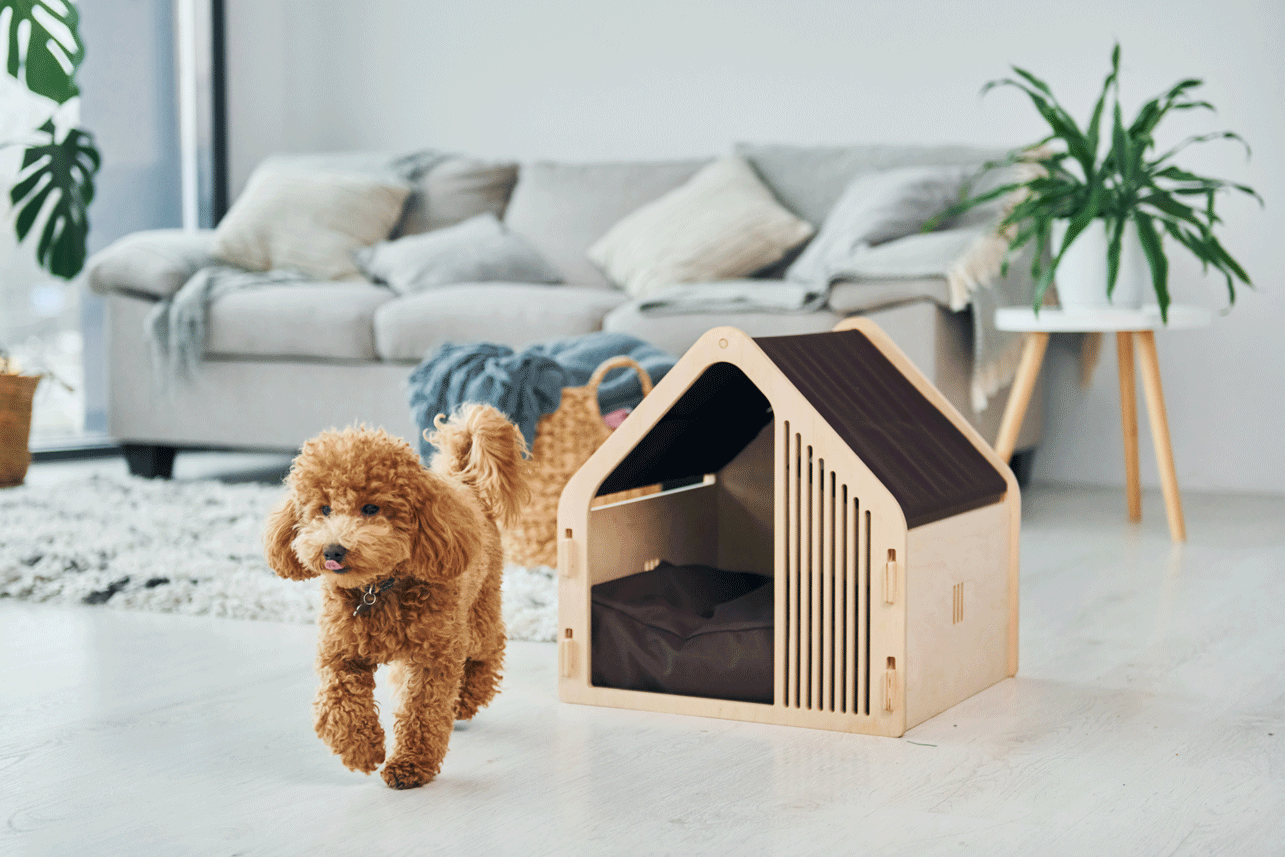When we think of dog care, we often focus on food, exercise, and grooming. But mental well-being is just as vital. A mentally healthy dog is happier, more balanced, and less prone to destructive behavior or anxiety. In this article, you’ll learn practical ways to support your dog’s emotional and cognitive needs at home, regardless of breed or age.
Why Mental Health Matters for Dogs
Mental health affects everything from behavior to physical wellness. Here’s why it’s crucial:
- Reduces stress and anxiety
- Improves learning and responsiveness to training
- Prevents boredom and destructive behavior
- Fosters a deeper bond with you
Just like humans, dogs need mental stimulation and emotional balance to thrive.
Signs Your Dog Needs Mental Stimulation
If your dog exhibits any of the following behaviors regularly, they might need more mental enrichment:
- Excessive barking or whining
- Chewing furniture or household items
- Digging or pacing
- Lack of interest in toys or play
- Overexcitement during simple interactions
- Difficulty settling down even after walks
Enrichment Activities for Mental Health
1. Puzzle Toys and Food Dispensers
Puzzle toys challenge your dog’s brain and keep them entertained. Examples include:
- KONG toys filled with treats
- Snuffle mats
- Treat-dispensing balls
Rotate these toys every few days to keep them novel and stimulating.
2. Training and Learning New Tricks
Short, positive training sessions keep your dog mentally active. Focus on:
- Obedience basics: sit, stay, come
- Fun tricks: spin, paw, roll over
- Advanced skills: scent detection, agility cues
Training also builds confidence and trust.
3. Interactive Play
Interactive games do more than burn energy—they build your bond. Try:
- Tug-of-war: Great for engagement and self-control
- Hide and seek: Hide treats or yourself
- Fetch with variations: Add commands like “drop it” or “wait”
4. Social Interaction
Dogs are social creatures. Interaction with humans and other pets helps prevent isolation and depression.
- Arrange playdates with known, friendly dogs
- Allow controlled greetings during walks
- Use puzzle feeders together with other dogs under supervision
5. Scent Work and Exploration
Smelling is the main way dogs interpret the world. Encourage:
- Scent walks: Let your dog sniff freely on walks
- Scent trails at home: Hide treats around the house
- New environments: Explore dog-friendly parks or pet stores
Creating a Calm and Enriching Environment
Safe Spaces
Set up a quiet area where your dog can retreat. Use:
- Soft bedding
- Low lighting
- Calming scents (dog-safe lavender sprays)
Environmental Enrichment
- Place a perch or platform near a window
- Play soft, relaxing music during alone time
- Use TV or dog-specific audio when you leave
Daily Mental Wellness Routine
| Time of Day | Activity | Duration |
|---|---|---|
| Morning | Training session + short walk | 20–30 mins |
| Midday | Puzzle toy + calm nap space | 1–2 hours rest |
| Afternoon | Social time or interactive play | 30 mins |
| Evening | Scent work + cuddle time | 15–30 mins |
Supporting Anxious or Reactive Dogs
For dogs prone to anxiety:
- Stick to consistent routines
- Use anxiety wraps or calming shirts
- Consult a trainer for desensitization or counterconditioning exercises
- Avoid overwhelming environments or sudden changes
Breed-Specific Mental Needs
Some breeds need more stimulation than others. For example:
- Border Collies & Australian Shepherds: Thrive with complex training and agility
- Terriers: Enjoy digging games and interactive toys
- Retrievers: Love fetch, carrying items, and social interaction
- Pugs & Bulldogs: Prefer shorter mental bursts and gentle play
Tailor activities to match your dog’s personality and breed group.
Common Mistakes to Avoid
- Over-relying on physical exercise: Mental tiredness is different from physical fatigue
- Ignoring breed tendencies: High-drive dogs need more enrichment
- Leaving dogs idle all day: Long periods of boredom lead to behavior issues
- Punishing stress behaviors: Address the cause, not the symptom
How to Tell It’s Working
After a few weeks of regular mental engagement, you should see:
- Reduced hyperactivity or nervous energy
- Faster learning and better focus
- More consistent relaxation and sleep
- Less behavioral issues like barking or chewing
Final Thought: A Balanced Dog is a Happy Dog
Your dog’s mental well-being is just as important as their physical health. With a combination of structured activities, daily enrichment, and an understanding of your dog’s emotional needs, you can help them feel secure, stimulated, and loved every day.
In return, you’ll enjoy a calmer, happier companion who thrives in every aspect of life. 🐶🧠

